Despite many commentators discussing its demise, Black Friday continues to be one of the most important days in the retail calendar.
But with retailers under pressure to drive sales, getting your paid search strategy right on one of the biggest discounting days of the year is absolutely crucial.
There has been a lot of talk about the difficulties facing the retail sector in 2018 and, when it comes to Black Friday, those difficulties fall into sharper focus. Retailers are under pressure to drive sales on one of the biggest days of the year and consumers are increasingly expecting more for their hard-earned cash, yet brands are becoming more reluctant to engage in that heavy discounting in order to protect their brand position and margin.
But with so much of the estimated £7bn that was spent across the Black Friday and Cyber Monday weekend going online, how those retailers approach their digital strategies Black Friday has the potential to make or break the start of the festive shopping rush.
So what can we learn from how leading retail brands approached Black Friday, what they did well, and where things went wrong?
Report: Lessons from Black Friday
Own your brand
This might sound like basic paid search marketing, but it is surprising how many brands do not still fully own their brand across all channels. Many brands were out-ranked by resellers across many of those key digital channels, and this invariably results in leaked traffic and sales.
We saw this with Skechers which, despite bidding on brand, saw its results appear below both the Google Shopping results and a competing PPC ad from Debenhams.
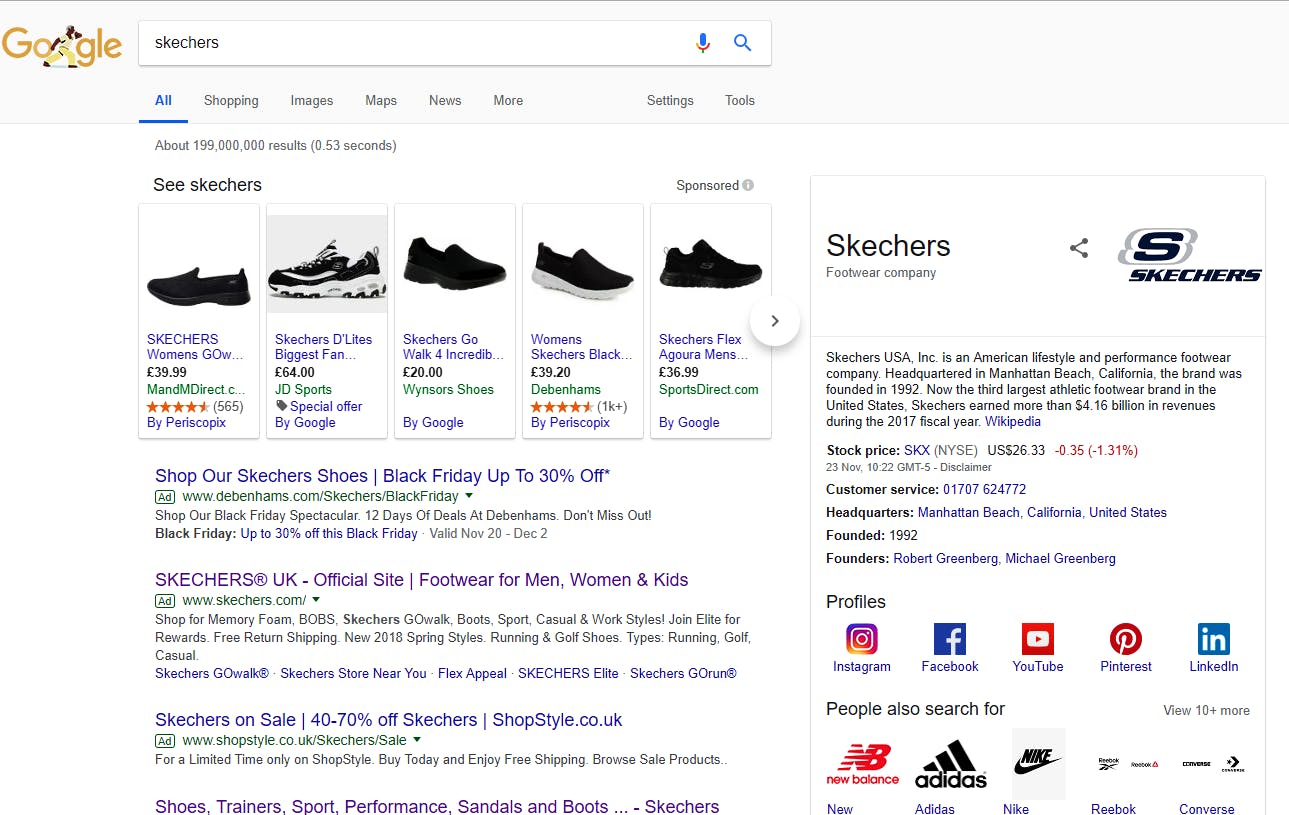
We saw a similar situation with Banana Republic which, whilst leading the search results for its own brand term, was outranked by competitors on many “brand + product” search terms.
If we compare this with the approach taken by All Saints, we see that there was complete ownership over brand terms in terms of Shopping, PPC and organic search, with resellers coming below the brand on the majority of brand and “brand + product” terms.
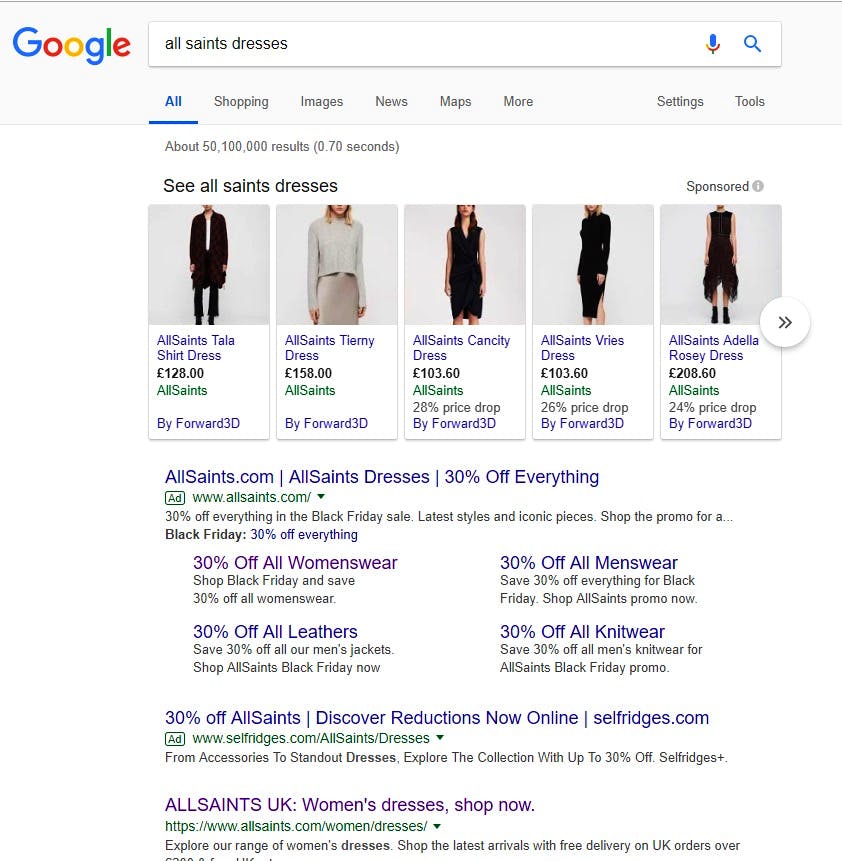
The lesson? Don’t leak traffic to resellers and competitors by neglecting to own your brand terms.
Have Black Friday-specific creative
Black Friday has become such a key retail event that the term ‘Black Friday’ is now synonymous with discounts in the modern consumer psyche. It’s therefore no surprise that the brands and ads that had the most impact were those that had creative specifically tailored to Black Friday.
Nasty Gal was one brand that seemed to have effective creative dedicated to Black Friday, with a clear proposition and a consistent tone of voice.
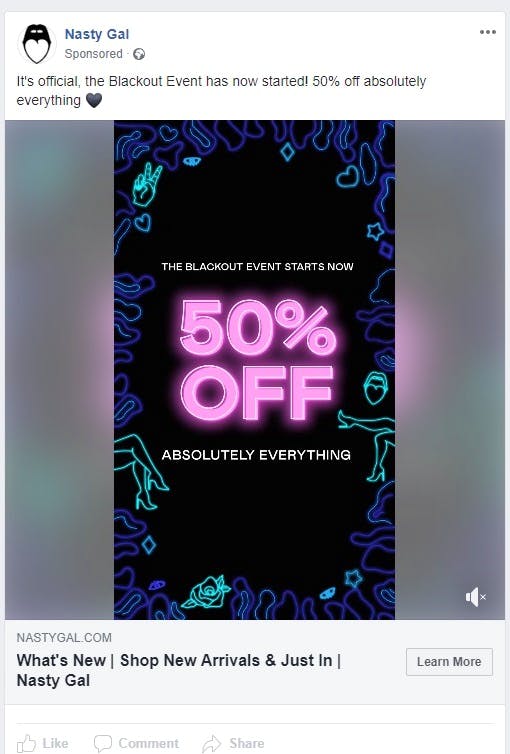
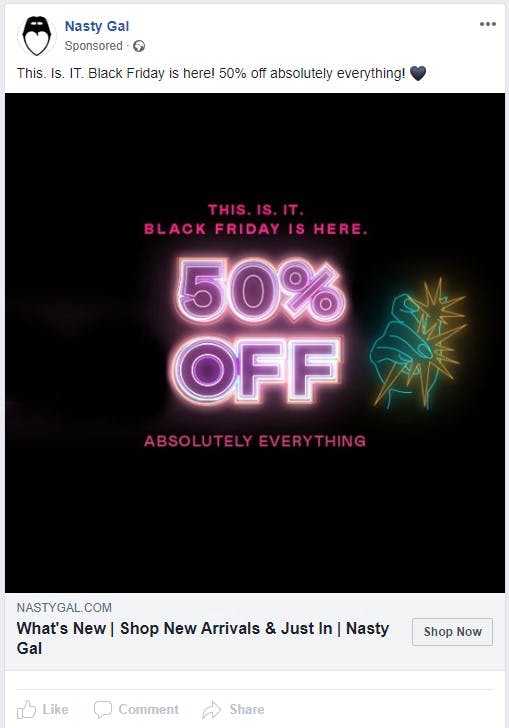
This approach was mirrored by brands such as Tommy Hilfiger and SimplyBe, which also offered a very clear and simple promotional proposition.
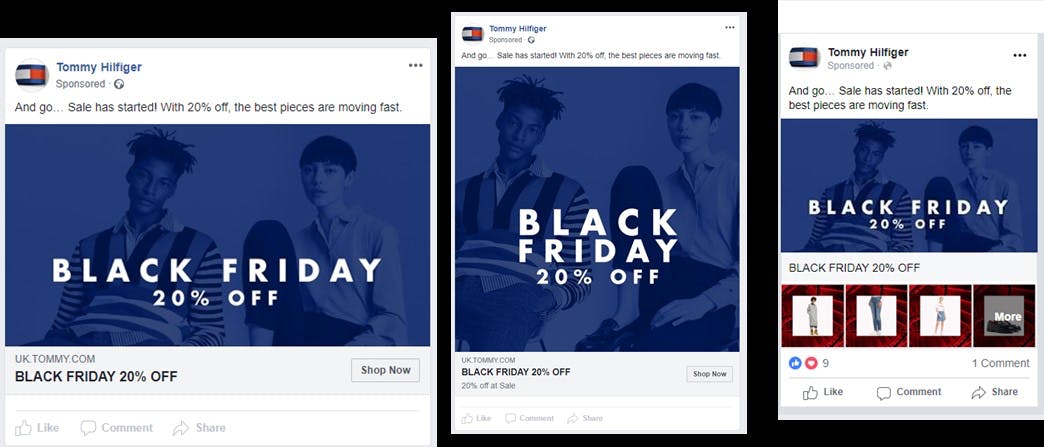
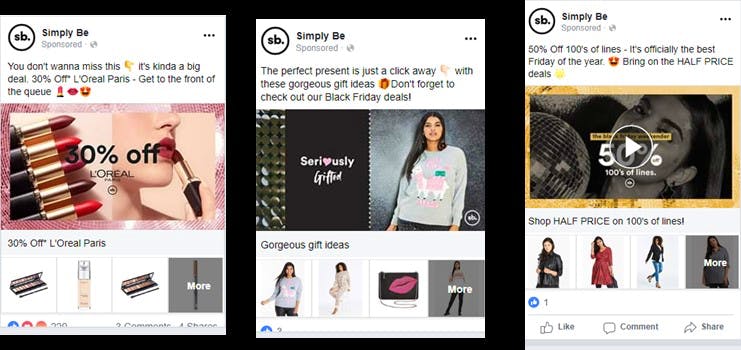
Other brands didn’t necessarily specify ‘Black Friday’ in their creative, but did nevertheless have a clear promotional message that they deployed across the Black Friday and Cyber Monday weekend. Jacamo was one such example.
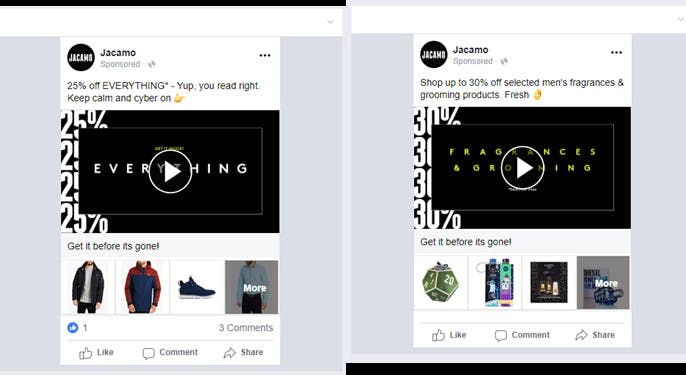
This compares to a number of brands that, in many cases, seemed to be using their ‘business as usual’ creative and trying to shoehorn it into what is now something of a ‘red letter day’ in the retail calendar.
One such example was Montblanc, which used minimal Black Friday messaging and instead used the event to promote a smart watch – even when that product was not relevant to the audience. On the occasions that the brand did use Black Friday messaging, there was little mention of the event beyond the headline. This didn’t reflect their tone of voice, and likely had a low level of engagement.
Another example came from Lacoste, which was using two dynamic ads with the exact same text copy, as well as serving a dynamic ad that still referenced the Spring/Summer collection.
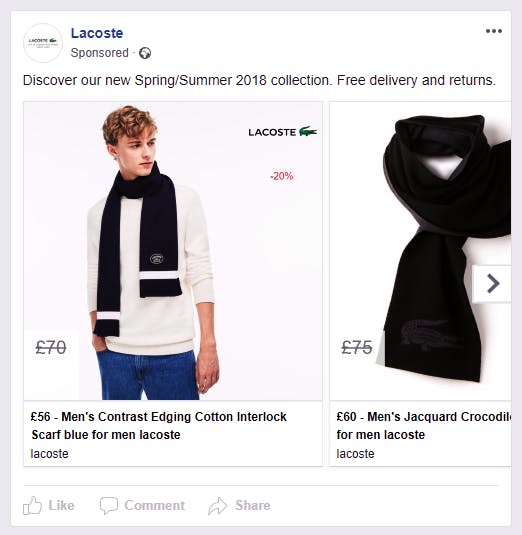
The lesson here is to think carefully about your creative and your message. Black Friday is not a BAU event, so don’t use BAU ad creative.
Have a clear tone-of-voice
Many of the more effective ads all had a very clear tone of voice, and it was actually many of the newer online fast fashion brands did this so much better than the more traditional bricks and mortar retailers.
Some were even very effective at utilising their influencers across paid social, with Misguided, I Saw it First and Dorothy Perkins doing this particularly well.

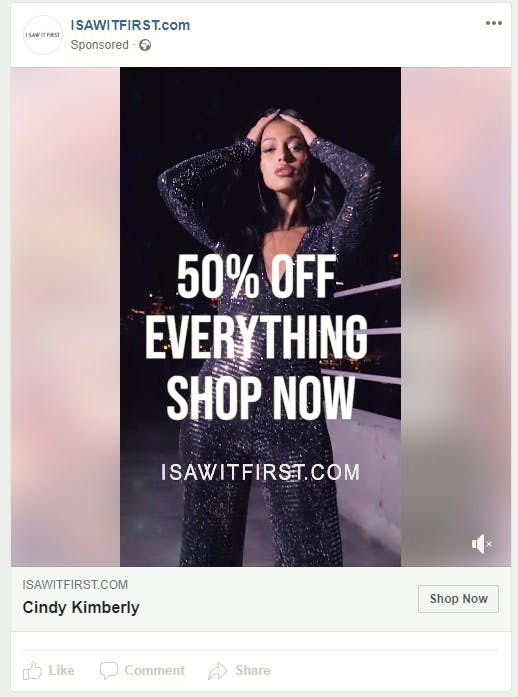

These ads all followed a very consistent tone of voice, and there was clear use of multi-channel integration through techniques such as campaign-focused social media hashtags (#BreakTheRules and #LoveDP), as well as consistent imagery and iconography.
Many brands overlooked the importance of tone of voice and multi-channel integration, and that affects the effectiveness of a campaign.
Have a cross-channel strategy
This consistency in tone of voice also helps brands to carry their campaigns across multiple channels. We saw some very effective cross-channel campaigns, as well as a number of brands that were pushing their products heavily on one channel, only to neglect to push those same products on other channels.
JD Williams was one such brand that utilised a range of types across channels, with strong coverage across search, shopping social and retargeting, as was Dorothy Perkins.
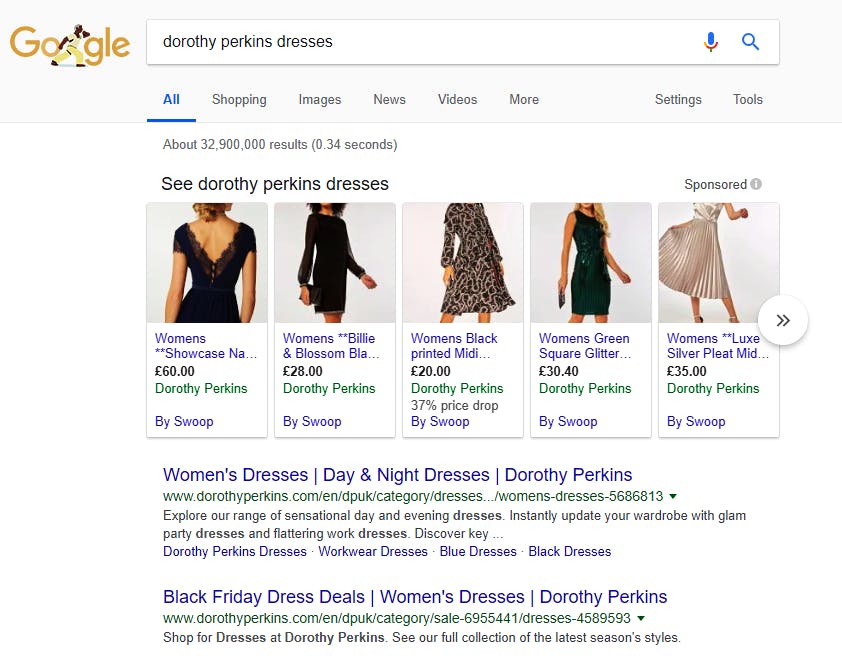
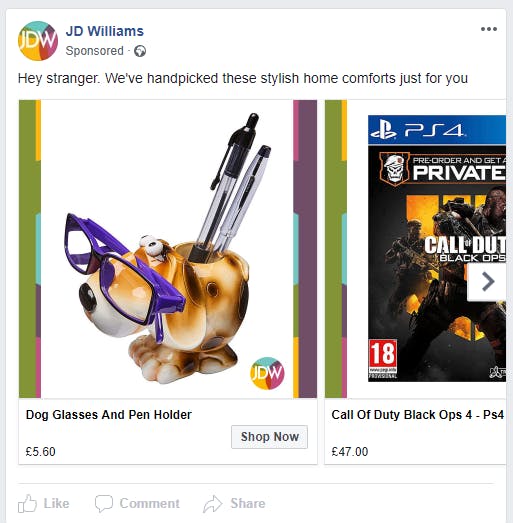
On the other hand, we saw brands such as Thomas Sabo struggle to put together an integrated strategy. In the case of Thomas Sabo, it had a Facebook ad specifically for King of Dreams, yet the ad on Google for this collection didn’t reflect that campaign and the brand barely appeared on shopping.
Test and learn
The ‘test and learn’ approach remains incredibly important to maximising value from ad spend but, perhaps in the heat of the Black Friday moment, we saw signs that brands were not looking closely at how to make their ads more effective. In the case of MAC Cosmetics and Montblanc, there was just one Black Friday ad.
By comparison, brands such as Topshop used a varied range of ad types and creative, leveraging a key theme throughout with the iridescent background and using a different ad for each category (including dresses, shoes, coats etc).
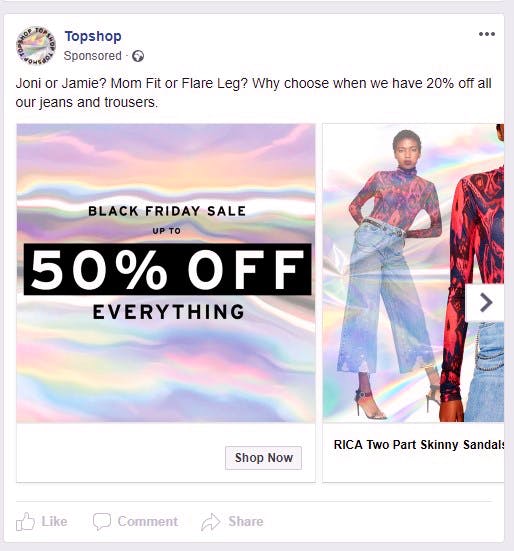
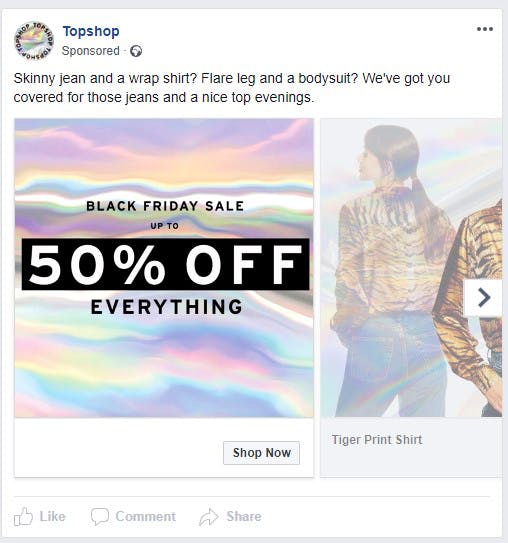
They also utilised a ‘still thinking about it?’ message for dynamic remarketing, taking audience into account to recapture attention later in the customer journey.
This campaign had all the hallmarks of a test and learn approach, and this ongoing practice of review and reiteration is something that all brands should be dedicating time to in order to make their ad spend work harder.
There were many examples of brands demonstrating some extremely innovative and effective Black Friday and Cyber Monday strategies, but it is surprising to see some brands overlooking some of the basic principles of biddable media.
Perhaps in the chaos that is one of the biggest retail weeks of the year, we saw brands struggling to fully utilise Google Shopping, losing ownership of their brand in paid search and recycling old and sometimes irrelevant creative.
Plan ahead, get the basics right and keep learning to make your ad spend work much harder as the competition for that Christmas gift spend heats up.
Learn more
For more retail trends, statistics and takeaways from Black Friday, download Econsultancy’s dedicated report, Lessons From Black Friday.
